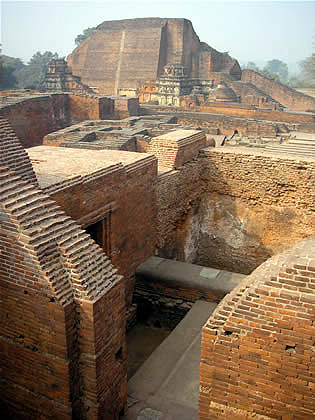ॐ श्री गुरुभ्यो नमः ॐ श्री शिवानन्दाय नमः ॐ श्री चिदानन्दाय नमः
Source of all Images in this Blog-post : Google Images : ‘Google Image Search’ will reveal the multiple sources of every single image shared in this Blog. For more details, kindly see ‘Disclaimer‘

Nālandā was an ancient center of higher learning in Bihar, India.The site of Nalanda is located in the Indian state of Bihar, about 88 kilometers south east of Patna, and was a Buddhist center of learning from the fifth or sixth century CE to 1197 CE.

The University was supported by patronage from the Hindu Gupta rulers as well as Buddhist emperors like Harshavardhana and later emperors from the Pala Empire.

The University complex was built with red bricks and its ruins today occupy an area of 14 hectares. At its peak, the university attracted scholars and students from as far away as Tibet, China, Greece, and Persia. Nalanda was ransacked and destroyed by Turkic Muslim invaders in 1193.

Nalanda was one of the world’s first residential universities, i.e., it had dormitories for students. It is also one of the most famous universities. In its heyday, it accommodated over 10,000 students and 2,000 teachers.
The university was considered an architectural masterpiece, and was marked by a lofty wall and one gate. Nalanda had eight separate compounds and ten temples, along with many other meditation halls and classrooms.
On the grounds were lakes and parks. The library was located in a nine storied building where meticulous copies of texts were produced.

The subjects taught at Nalanda University covered every field of learning, and it attracted pupils and scholars from Korea, Japan, China, Tibet, Indonesia, Persia and Turkey.
During the period of Harshavardhana, the monastery is reported to have owned 200 villages given as grants.
The library of Nalanda, known as Dharma Gunj (Mountain of Truth) or Dharmagañja (Treasury of Truth), was the most renowned repository of Hindu and Buddhist knowledge in the world at that time.
Its collection was said to comprise hundreds of thousands of volumes, so extensive that it burned for approximately more than 6 months when set aflame by Turkish invaders.
